bird photographer trying to capture kingfisher takeoff and flight shots. The fishing kingfisher had better luck than I did but I sure as hell had more fun.
All 15 photos below are presented in the order they were taken.
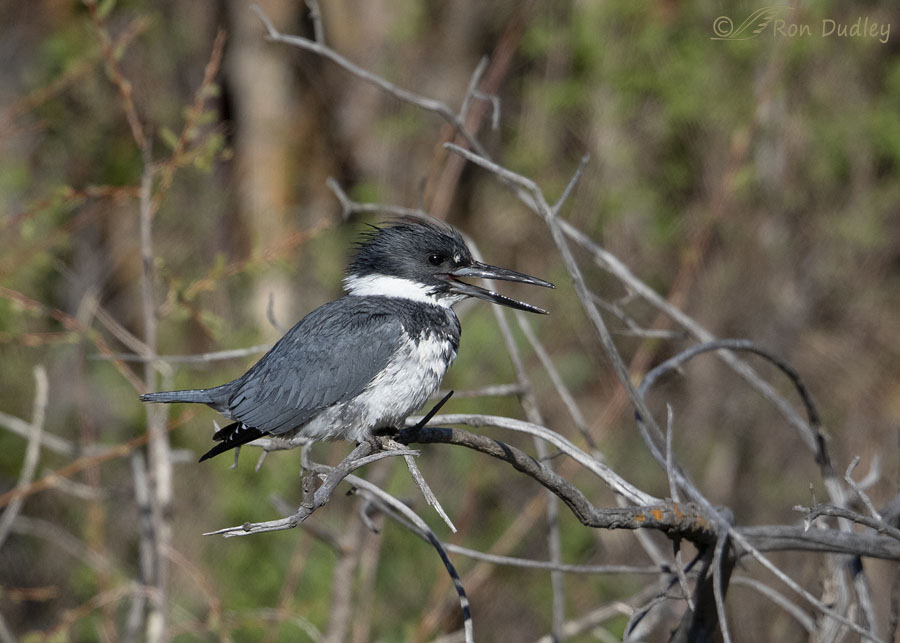
Three days ago I spent quite a while trying to photograph this male Belted Kingfisher as he was fishing in a mountain creek. While I was with him he used about a half-dozen different perches that had a clear view of the creek, some of them repeatedly. He was seldom super-close to me so I used the opportunity to try to get takeoff and flight shots, even though the settings were often cluttered with branches and twigs.
Photographing diving kingfishers is always a challenge because they’re so incredibly fast and they rarely telegraph their intentions. I have more “air shots” of diving kingfishers than I care to think about but this guy was usually far enough away to give me enough room in the frame to at least have a chance. So I went for the gusto, repeatedly.
In this shot he opened his bill for a split second so I instinctively fired a burst. But it was just another false alarm – faked out by a kingfisher once again.
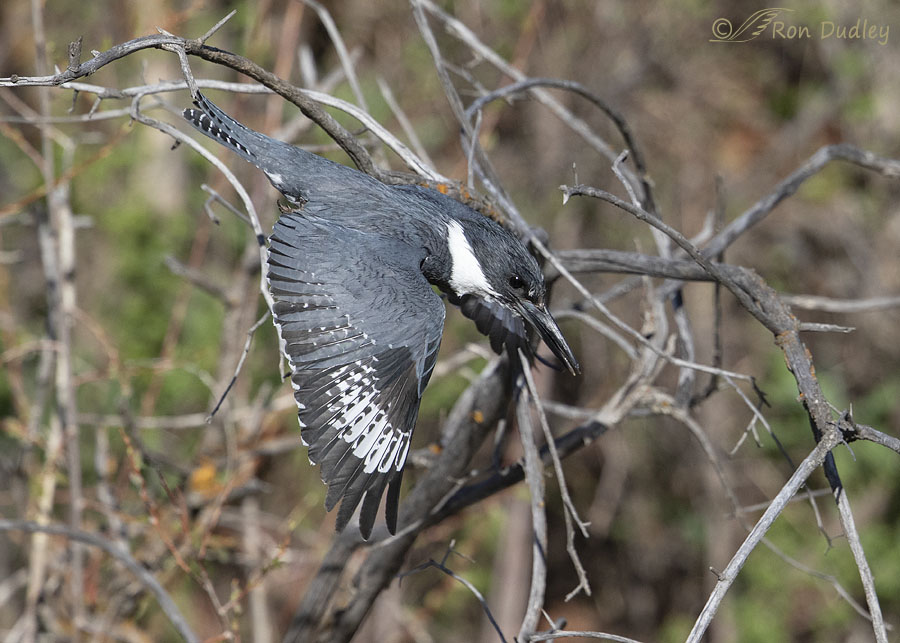
But 74 shots later I managed to keep him in frame when he actually did dive on a fish. It’s a cluttered setting but I’ll take it.
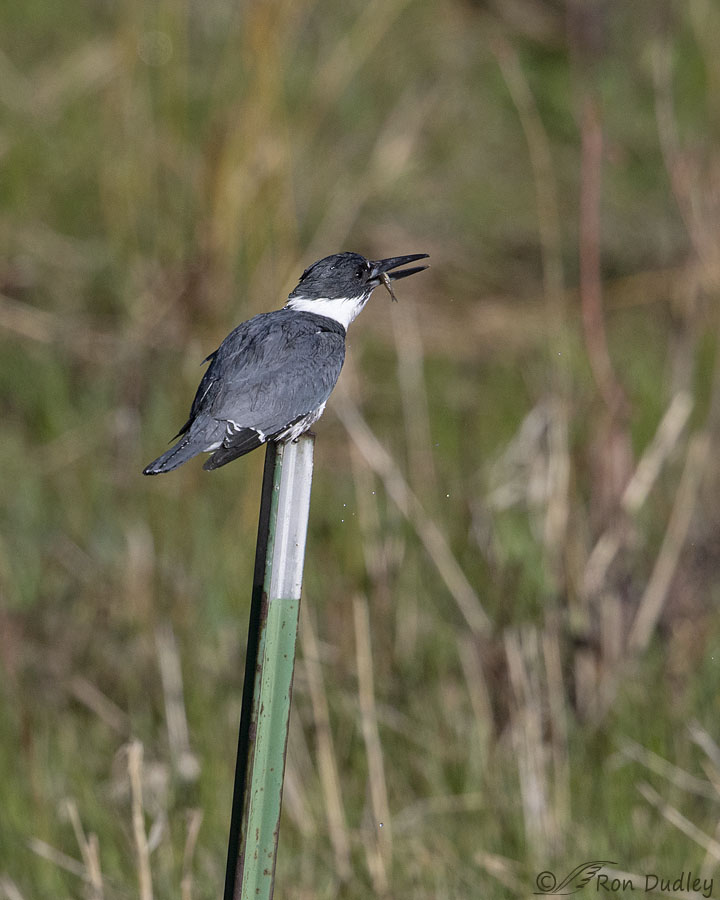
He caught the fish too.
But typical of his tendencies that morning he flew to a far away perch to gobble it down and he had his back to me anyway. This small fish is about the size of all of them he caught that morning. They didn’t require much ‘tenderizing’ so each fish went down the hatch very quickly.
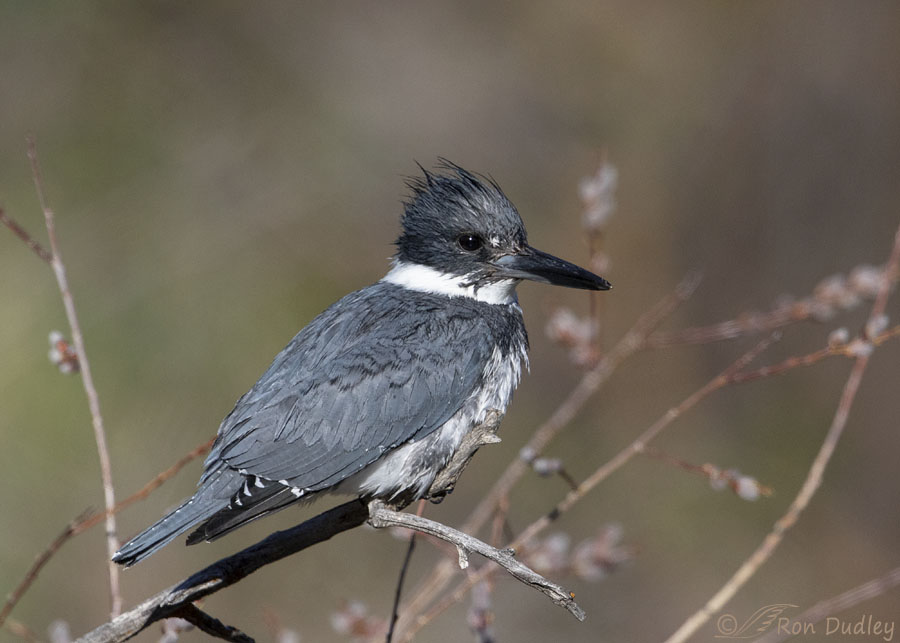
His next chosen fishing perch was the only one he used that morning that was close to me. He was close enough to cause me to cut off much of his body when he eventually took off after another fish.
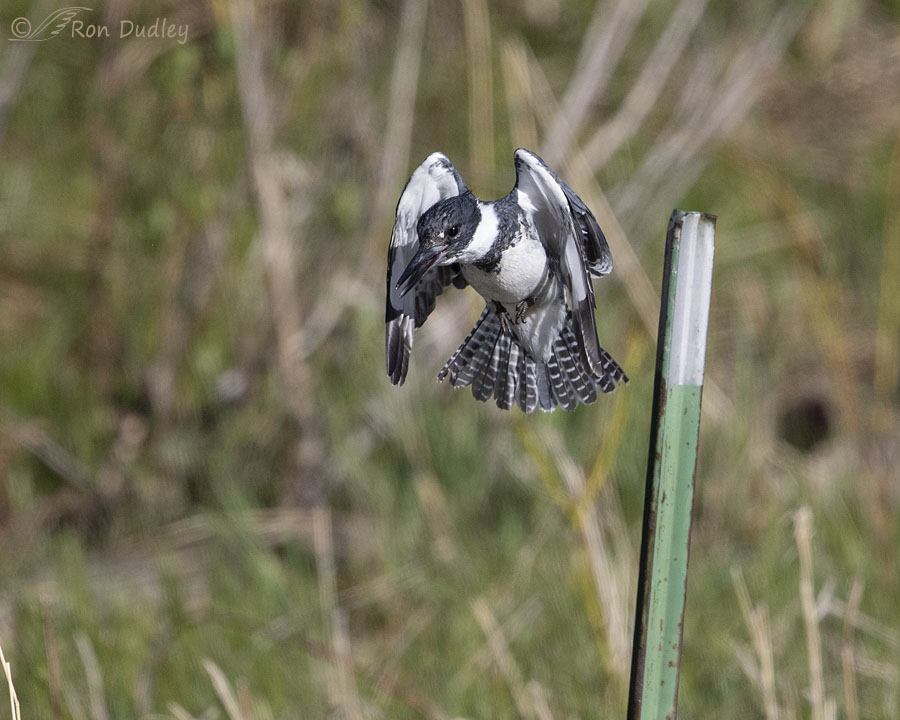
Next he went back to the ugly metal fence post which turned out to be his favorite fishing perch that morning. Don’t ask me what that mysterious black blob is to the right of the post because I’m not sure. It bothers me so much I considered cloning it out but in the end decided against it. In bird photography distractions happen and I don’t like removing ‘stuff’ from my photos so I’ll just live with it.
This time when he dove on a fish I actually got three shots before he was out of the frame (the third one was soft so I’m not including it). That surprised me but there’s a reason for it. In this shot he’s already beginning to…
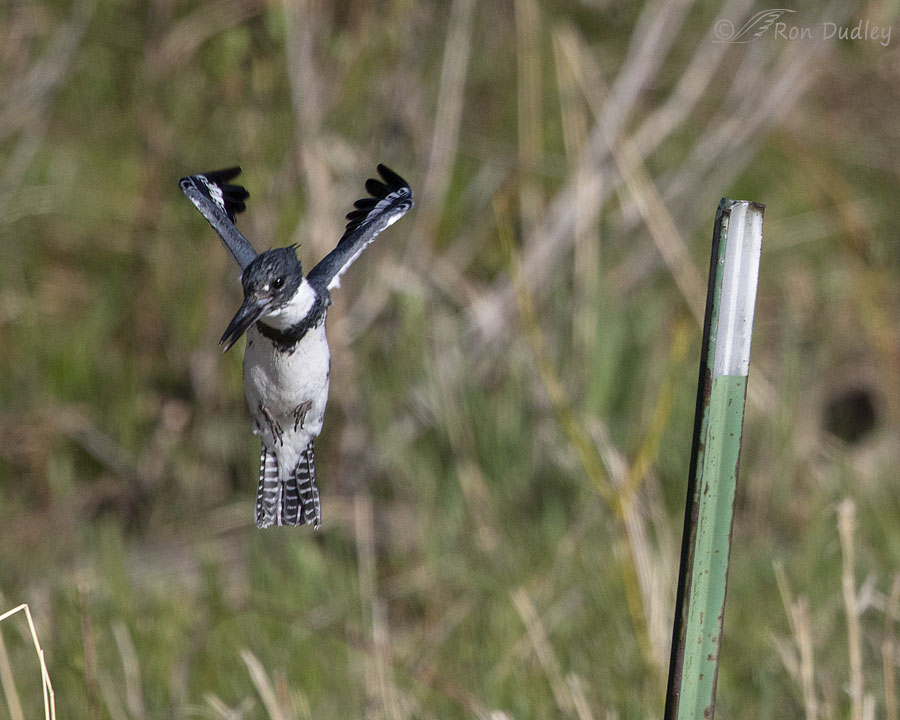
apply his air brakes and abandon the attempt. Apparently the fish he was after was quicker than he was so he gave up in midair and…
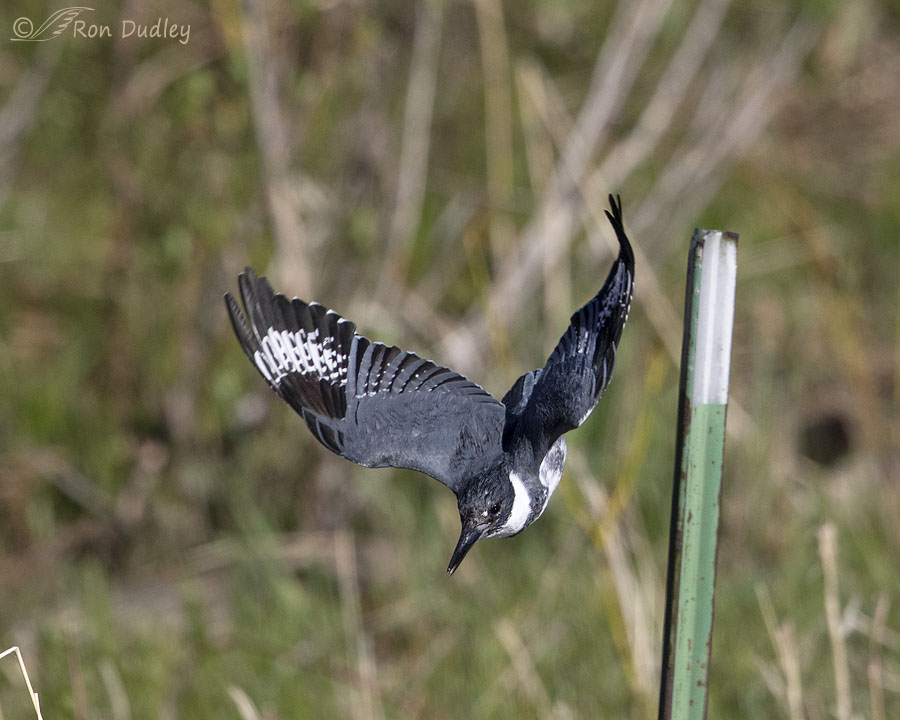
returned to the same perch. Here he’s trying again. I don’t remember if he caught the fish but given his success rate that morning he probably did.
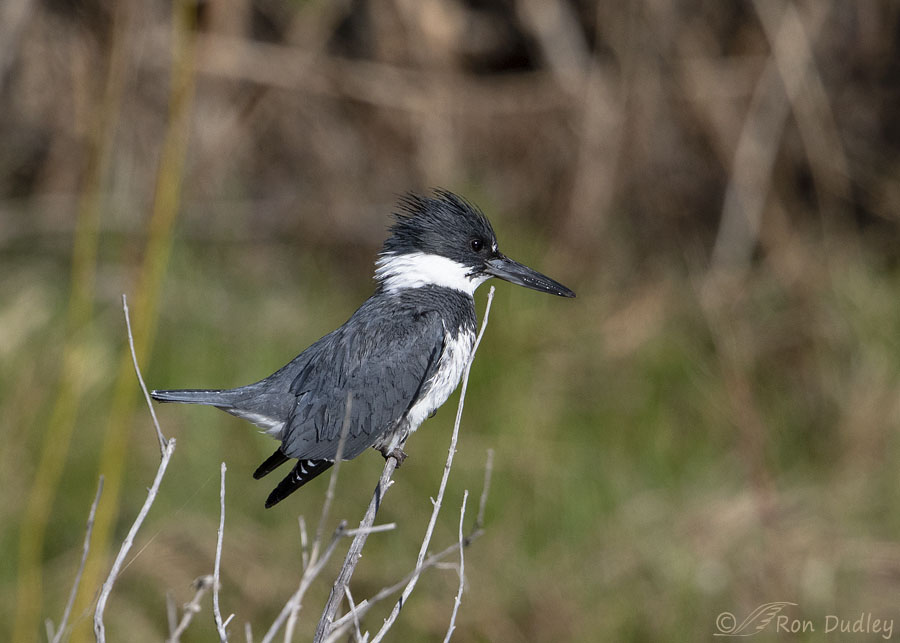
This was his next fishing perch. It gave me hope because it wasn’t so cluttered with branches and the background was far enough away to provide a soft bokeh. But he was pretty creative in coming up with ways to compromise my takeoff shots.
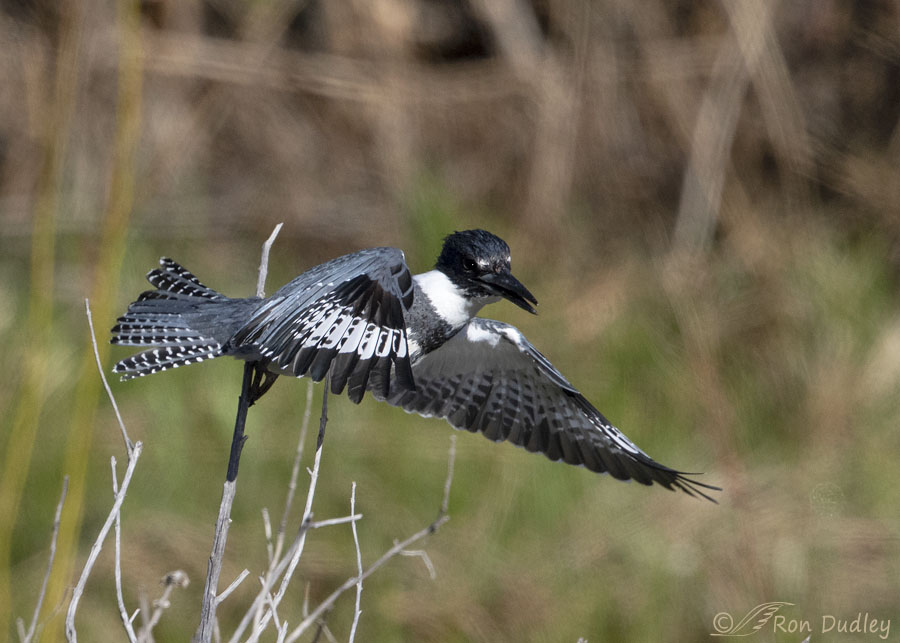
He turned his head far enough to his right to put the side of his face in shade so there’s very little detail there. With his face in shade I was lucky to get a little light in his eye in both…
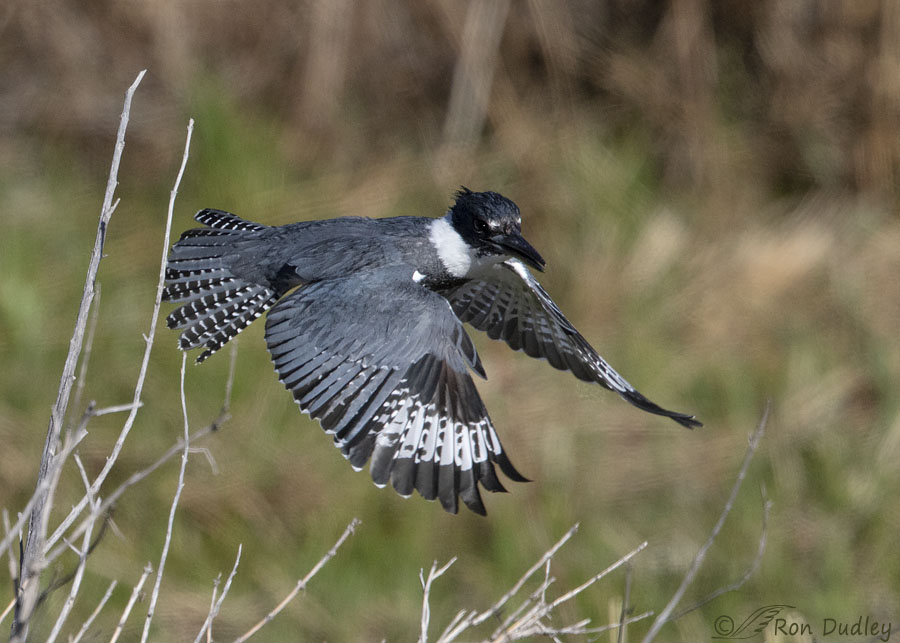
takeoff shots from this perch.
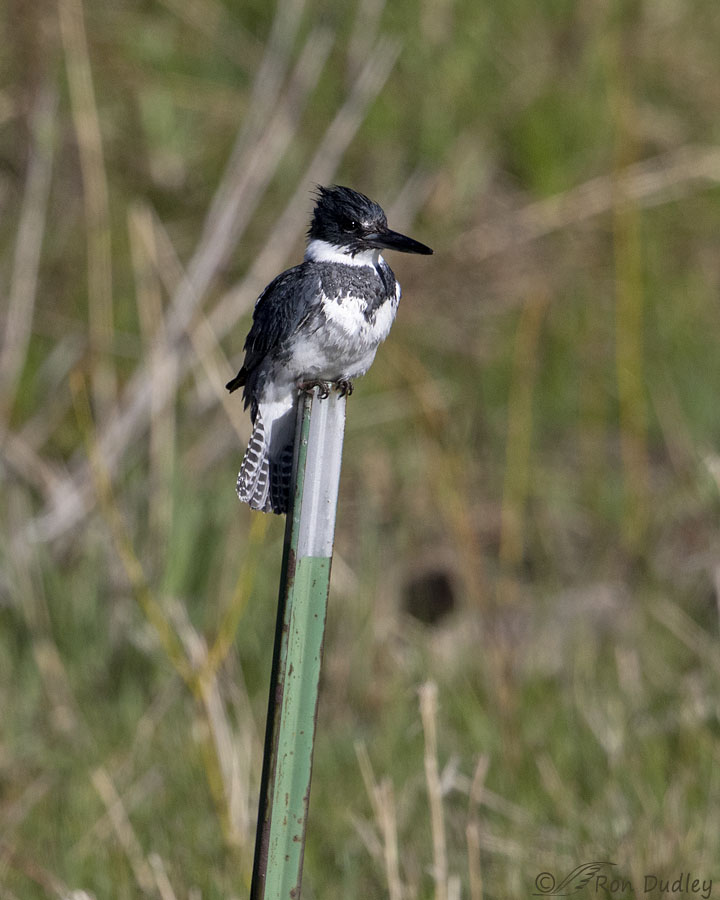
Next he went back to his favorite fishing perch. At least this time when he dove on a fish he…
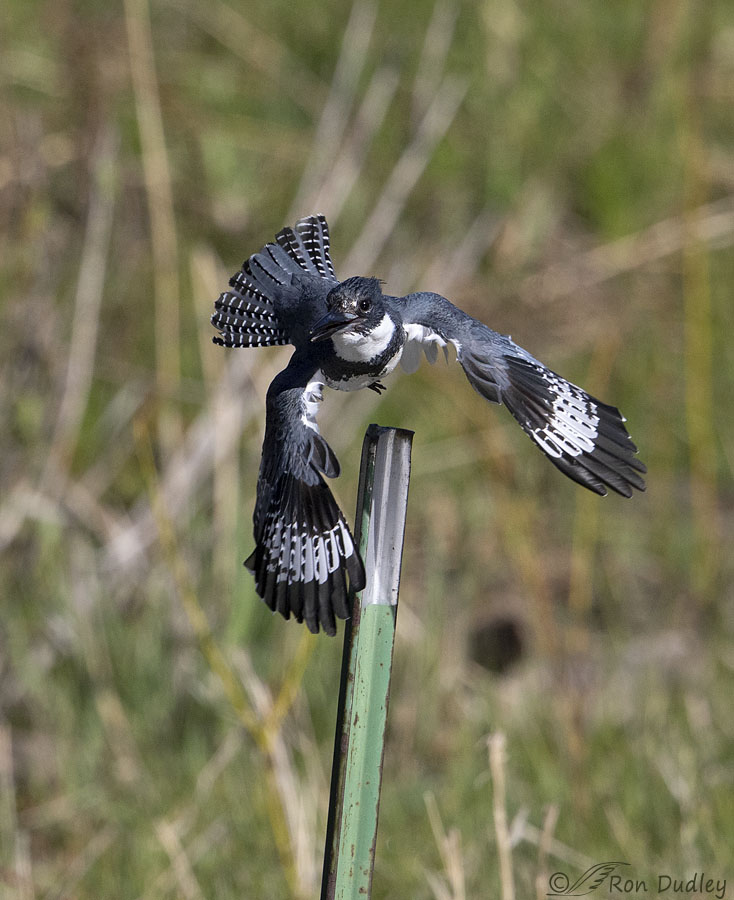
turned his head the other way so I had light on his face and a catch light in his eye.
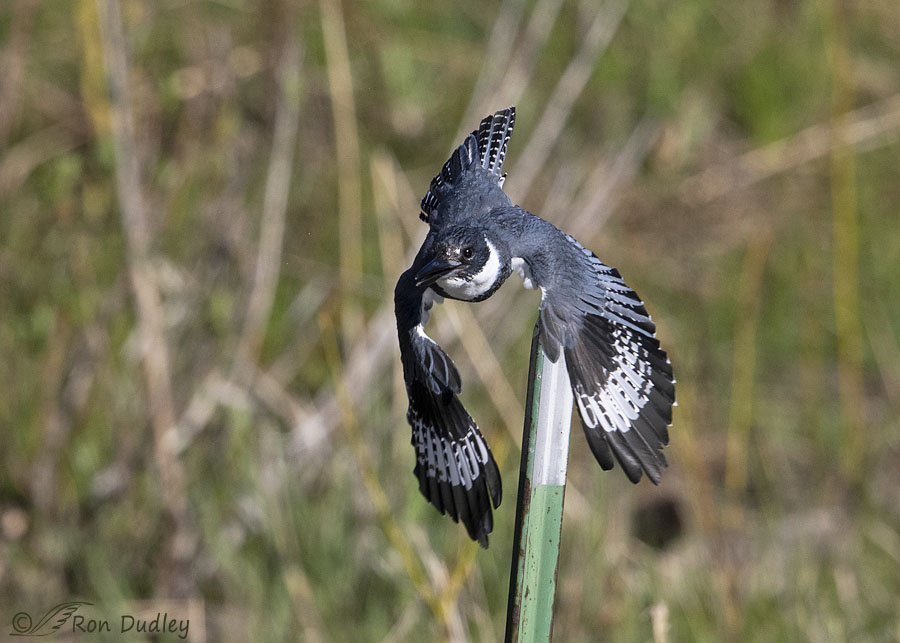
In the next shot in the burst we can see that this time he had no intention of abandoning his attempt. He’s obviously on a mission. Once again I don’t remember if he caught the fish but if he didn’t it wasn’t for lack of trying.
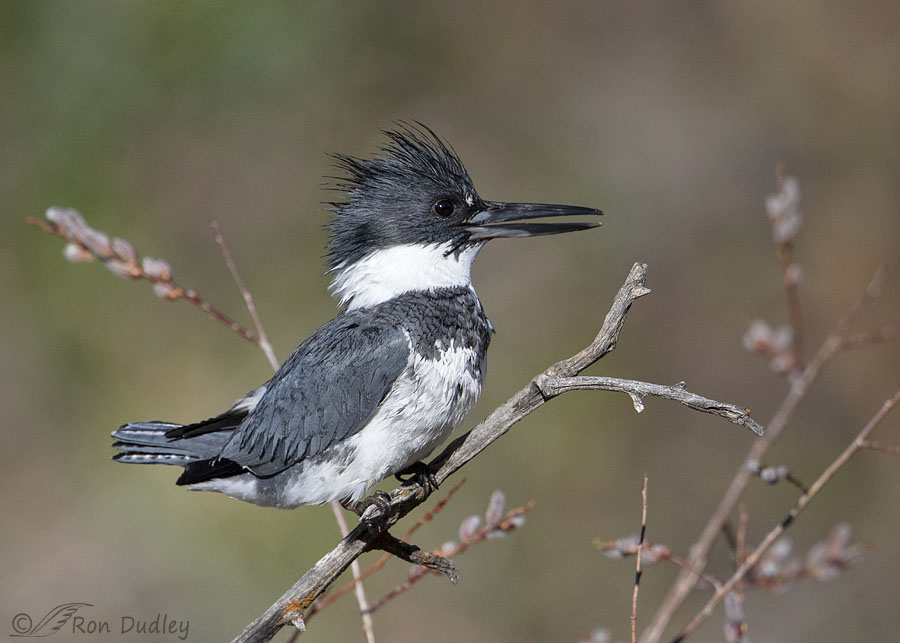
When he made his last attempt that I’ll include here he returned to the same close perch he used in photo #3. By now I’d moved my pickup a few feet to put the pussy willows in the background in a slightly more photogenic position in the frame.
But if you ask me he made a mistake by choosing such a low place on the perch to fish from. When he spotted a fish in front of and below him he had to…
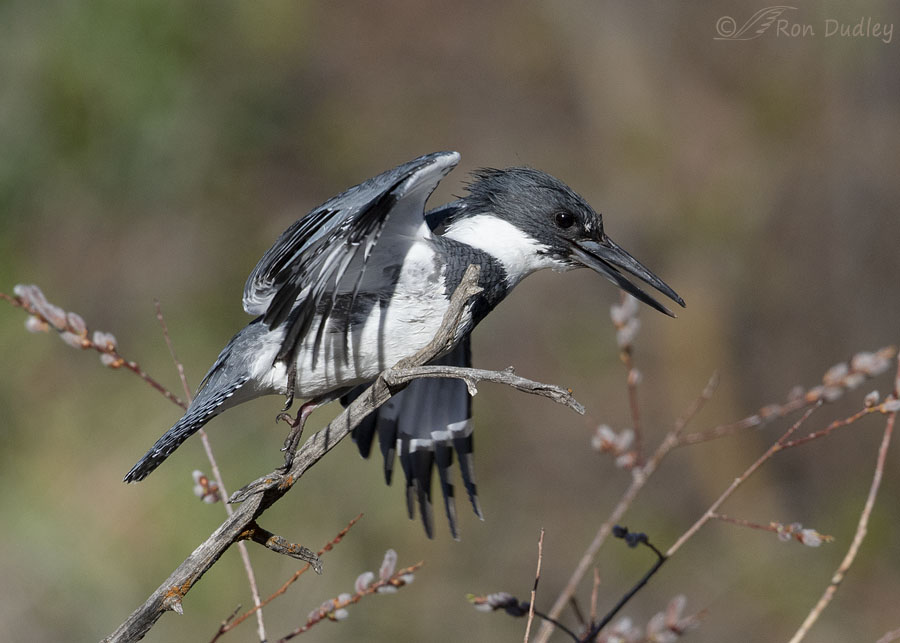
get his flapping right wing over the top of the forked branch in front of him. That slowed him down a little but it also caused him to go so high in the frame so in the next shot I cut off half his body. Next time I hope he’ll ask the photographer for advice…
In the end, even after all the attempts I made that morning, I never did get any exceptionally nice takeoff or flight shots but I’m reasonably pleased with some of them.
On the other hand the kingfisher did much better than I did. In the 17+ minutes I spent with him I believe he caught six small fish before leaving the area.
Ron


WOW!! Yes you did have more fun!
Great shots!
WHAT AN AMAZING SERIES…WOW!!!👏👏👏
I think these are pretty darn spectacular takeoff shots, Ron! The wing positions and feather detail you caught are fantastic, especially those of him coming off his “favorite” perch. Also, congrats on getting such sharp shots considering the degree of difficulty shooting an extremely fast bird in such a crowded environment. 🙂
I appreciate your observation about the sharpness, Marty.
But just wait until tomorrow, when I’ll be posting some of the softest shots I’ve ever posted…
Ron,
I love these (and most) birds. So cool to catch them taking off. Despite the background and other criticism you impose on yourself, you are still masterful at the photography and the story telling. I am impressed enough today to comment on the wing contortions/positions in some of these frames that are different than what we usually see (5, 6, 12, 13) in “classic” flight shots–truly acrobatic!
Nice work and thanks,
Stephen
Much appreciated, Stephen. Thank you.
Awe. Wonder. Delight.
Which are so often my emotions on your site.
Thank you, EC.
I haven’t seen any Belted Kingfishers around here for awhile, so those 17 minutes are not only a pleasant surprise but reveal much more, as Kris commented. However, those feet are still a hoot.
“those feet are still a hoot”
They always get my attention too, Lyle – well, maybe it’s the legs more than the feet, because they’re so darn short.
Excellent! Thank you once again.
Thanks, Kathryn.
Terrific series! Love the various wing positions. I just marvel at the shape of these birds…(#2445 portrays them perfectly…they just are so unique). Thanks for the great captures.
Thank you, Kathy.
Kris is right. What a wonderful group of photos for understanding the markings and postures of male belted kingfishers! I’ve always wondered if there is a purpose for the white spots just in front of their eyes. Do you have any ideas? I can imagine an Indian legend about how the Great Creator put them there to give observant fish a warning that the kingfisher is coming, perhaps because the kingfisher did something after he was designed that he shouldn’t have.
“Do you have any ideas?”
I don’t, Nancy. I remember trying to research it once but I struck out.
What a DYNAMIC series ! We get to see positions of wing-flex that are
invisible to our “sluggish” ( compared to your shutter, for sure ! ) human
eyes– really makes me appreciate bird flight even more.
“really makes me appreciate bird flight even more”
Yes, I have the same reaction, Kris.
Formidable! (wonderful French word kinda like amazing but even more astounding) Thanks so much!
Formidable is a great word for this series 🙂 the little bird is quite an acrobat! and its air-brakes are impressive!
Mary, “formidable” seems perfect when applied to trying to photograph kingfishers, in flight or even perched.
What and interesting and exciting series. Looks like a fun 17 minutes for you and of course for him. Love that shot where he puts the brakes on because the fish is gone. That is something that you would never even notice without photography. Perfection would be not to have the ugly metal fence post and the black spot, but nothing is ever perfect. Wonder what those little fish are?
I hope all your followers realize how difficult it is to successfully photograph Kingfishers in action.
“Wonder what those little fish are”
Me too, Everett. Although I was glad to see they weren’t the invasive weather loaches that seem to predominate in most of the streams and lakes down in the valleys.
What fun! 🙂 Fence post “ugly as sin” but sure made for a few great shots of the Kingfisher! 🙂 The “stop action” REALLY show him off!
Thank you, Judy. Fun for me, anyway. For the kingfisher it was probably just work.
Excellent series Ron! Thanks for sharing!
Charlotte Norton
Thanks, Charlotte.